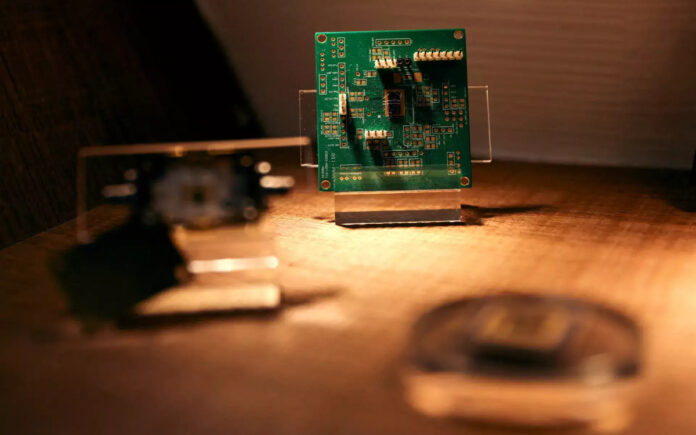Taipei/Beijing: Taiwan’s once-dominant legacy chip industry is facing increasing pressure as Chinese foundries aggressively expand their market share, threatening the long-held leadership of companies like Powerchip, UMC, and Vanguard International.
When Taiwan’s Powerchip Technology partnered with the eastern Chinese city of Hefei in 2015 to establish Nexchip, the goal was to secure a foothold in China’s rapidly growing semiconductor market. However, nearly a decade later, Nexchip has emerged as one of Powerchip’s biggest competitors, benefiting from Beijing’s localization push and offering steep discounts on legacy chips.
Nexchip, along with China’s Hua Hong and SMIC, has gained a significant foothold in the $56.3 billion mature-node chip market, which produces chips using 28-nanometer technology and larger. The rapid growth of these Chinese foundries has drawn the attention of the Biden administration, prompting an investigation into China’s semiconductor strategy.
Taiwan’s Struggle to Adapt
Taiwanese chip manufacturers are now being forced to pivot toward more advanced and specialized processes to maintain their competitive edge.
“Mature-node foundries like us must transform; otherwise, Chinese price cuts will mess us up even further,” said Frank Huang, chairman of Powerchip Investment Holding and its subsidiary, Powerchip Manufacturing Semiconductor Corporation.
UMC, another key player, acknowledged the challenges posed by China’s aggressive expansion, noting that it has been collaborating with Intel to develop more advanced chips in an effort to diversify beyond legacy chip production.
The intensifying trade tensions between the U.S. and China could offer some relief to Taiwanese manufacturers, as companies increasingly seek alternatives to Chinese-made chips to safeguard their supply chains. However, former U.S. President Donald Trump has proposed imposing tariffs of up to 100% on semiconductors manufactured outside the United States, adding another layer of uncertainty to Taiwan’s chip industry.
China’s Rising Market Share
China’s legacy chip industry has seen rapid growth, bolstered by strong financial backing from Beijing and a willingness to operate with lower margins.
According to TrendForce, China’s share of global mature-node chip production stood at 34% in 2024, compared to Taiwan’s 43%. However, by 2027, China is projected to surpass Taiwan, while South Korea and the U.S., both with single-digit market shares, are expected to decline further.
A report by SEMI highlights that out of 97 new semiconductor fabrication plants scheduled to begin production between 2023 and 2025, 57 are located in China.
Despite these challenges, Taiwanese manufacturers still hold an advantage in process stability and higher production yields. However, an executive at a Taiwanese chip design company noted that Chinese foundries have become increasingly aggressive in securing contracts, particularly in consumer-focused sectors like display panels.
Chinese government-affiliated companies, including China Mobile and China Telecom, have also tightened requirements for domestic companies to use China-made components, further pressuring Taiwanese firms.
Taiwan’s Strategy for Survival
Industry analysts predict that Taiwanese chip designers and manufacturers will continue shifting toward specialization and higher-end semiconductor processes. However, competition from China is expected to put downward pressure on profitability in the medium term.
Powerchip’s Huang stated that the company is reducing its focus on display driver and sensor chips, which have heavy exposure to the Chinese market, and shifting toward 3D stacking technology—an advanced process that integrates logic and DRAM memory chips to enhance computing performance and power efficiency.
Although Powerchip still holds a 19% stake in Nexchip, it no longer plays an active management role.
Also Read | Nicaragua Escalates Tensions with Vatican After Exiled Bishop’s TV Appearance
“For chips that will be used in China, we won’t be able to do the business… We must exit; otherwise, there’s no way to survive,” Huang said.
Some Taiwanese manufacturers have already begun benefiting from geopolitical tensions, with more companies redirecting orders to non-Chinese facilities. A Taiwanese chip design executive revealed that international customers have increasingly requested that production be kept outside China.
Also Read | Australia’s Global Lithium in Showdown Over Alleged Chinese Influence
“Some customers will tell us that no matter what, they don’t want us to tape out chips in China; they don’t want ‘Made in China,’” the executive said.
With China’s semiconductor industry continuing its rapid expansion and the U.S. tightening its trade policies, Taiwan’s legacy chip industry faces an uncertain future, navigating both economic pressures and shifting global alliances.



